Burlington, IA, was our stop for this day. A chance sighting as I went through the welcome center alerted me to the fact that Burlington had been the boyhood home of Aldo Leopold. His family's homes are preserved by the Leopold Landscape Alliance although the folks at the center didn't think they would be open (they weren't). The site was not on the HOHO bus route, but it was within walking distance, so I determined I would hoof it after the requisite bus circuit of the city.
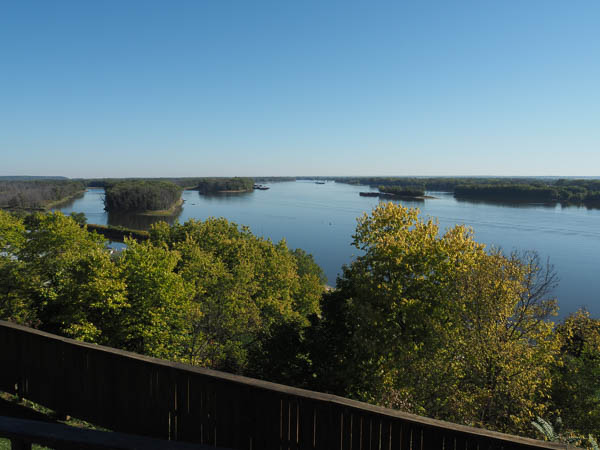
The first stop for the HOHO was the Mosquito Park lookout over the Mississippi facing upriver. It shows the channel in the center (with a tow coming down in the distance) and several islands on either side of the channel. Even this far north, low water is evident.
We convinced the bus driver to stop just long enough to snap a photo.
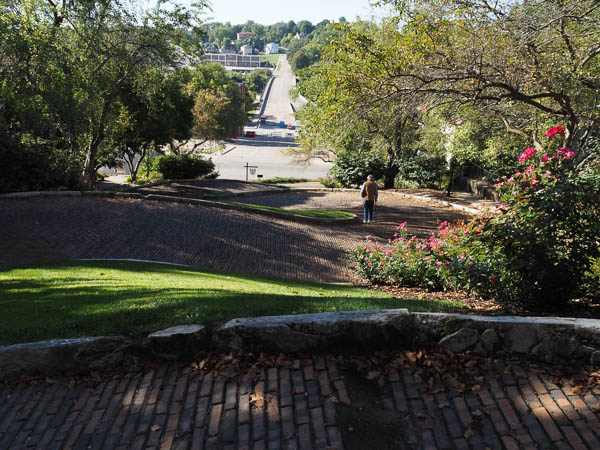
The next stop was a museum at the top of twisty Snake Alley. A few of us didn't want to visit the museum, but we did want to explore the little street. The driver agreed to pick us up at the bottom if we were waiting there. We were.
I don't know how its twistiness compares with San Francisco's Lombard street, but it was indeed steep and sinuous. The design allowed mule- and horse-driven carts to climb the steep bluff. The bricks were laid in an intricate pattern, but not one that lent itself to photography.
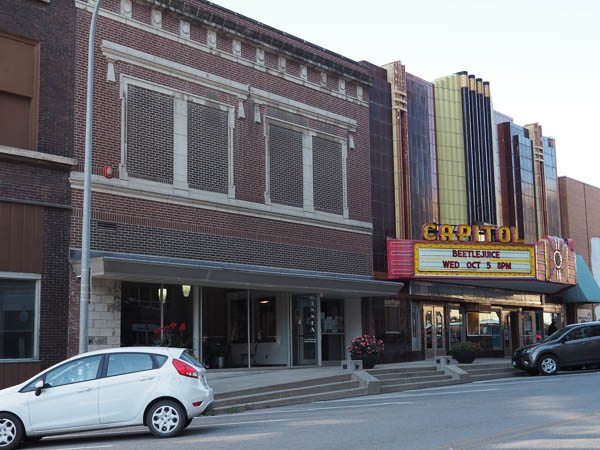
The closest HOHO stop to the Leopold complex was the Capitol Theater. I took the opportunity to tour it.
The deco facade marks the original theater. The brick building to its left is a new acquisition that holds storage and support spaces such as reception and dressing rooms.
The theater opened in 1937 with The Prince and the Pauper and closed in 1977 with Steven King's Carrie. It remained derelict, with consequent damage from vandals and lack of maintenance, until 2005 when the Capitol Theater Foundation purchased it. After extensive restoration the theater reopened in 2012.
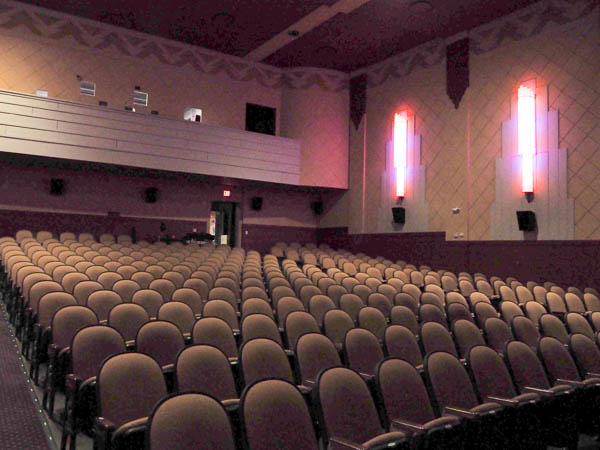
The deco details of the interior have been resurrected from the vandalism and decay.

The building adjacent to the theater had at one time housed a home economics classroom. This installation remained. I hope they will find a way to preserve and incorporate it because it is a charming thing in its own right.
The dishwasher integrated into the sink is a new one to me. Alas, I can't read the brand name to find out more about it.
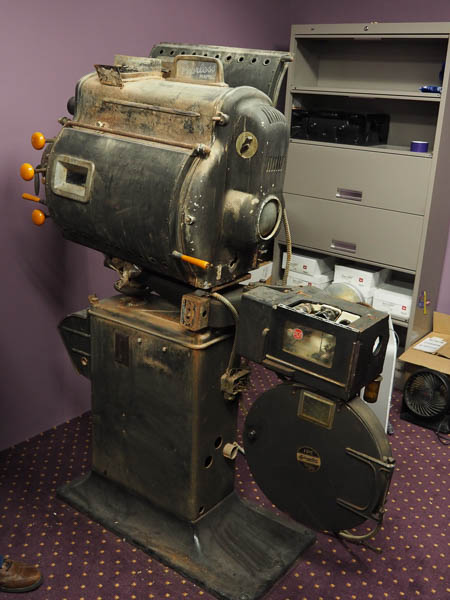
The theater is now a multi-use performing arts center, but they have preserved this carbon arc projector -- one of a pair used back in the day. At present they have modern digital projection equipment.
I was not aware of the extensive heat generated by these projectors. They required extensive venting and still were a fire hazard.
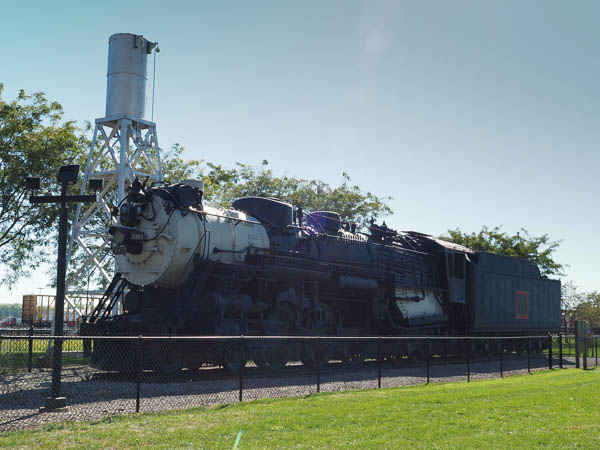
I had forgotten that Burlington was a major railway town, but the way to the Leopold complex took me past the switching yard and Amtrak station. This steam locomotive, #3003, manufactured by the Baldwin Locomotive Works in 1930 for the Chicago, Burlington, and Quincy line, was on display. Jim's grandfather worked for Baldwin in Philadelphia. This locomotive pulled passenger trains at speeds of up to 90 mph for nearly 20 years before being replaced with more efficient diesels.
The sand tower was originally located closer to the river. Such towers were used to fill the sand boxes on the locomotives. Sand distributed on the rails provided increased traction.
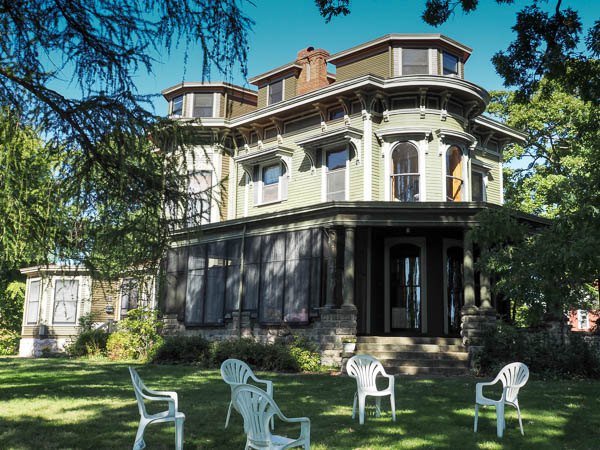
After poking around the rail-yard a bit, I hiked up the hill to the Leopold complex. This is the house once owned by Aldo's grandparents and where he was born. It sits high on a bluff overlooking the river and has extensive grounds. Since the house was not open for visitors, I contented myself with prowling around the grounds and the trail along the bluff.
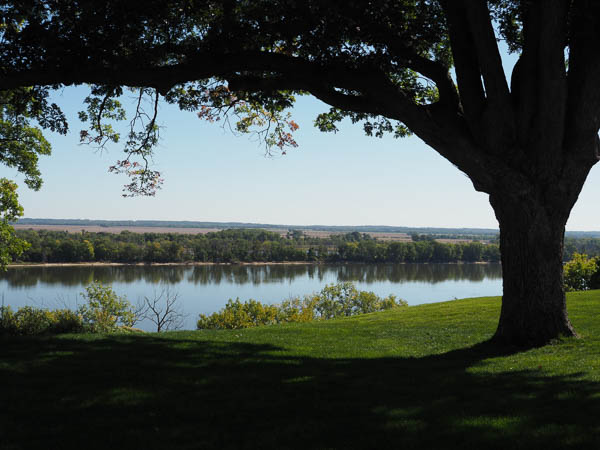
I wasn't able to get a good picture of the river downstream from the house because the trees had grown up to block the view. I confess to trespassing on a neighbor's property to get this view.
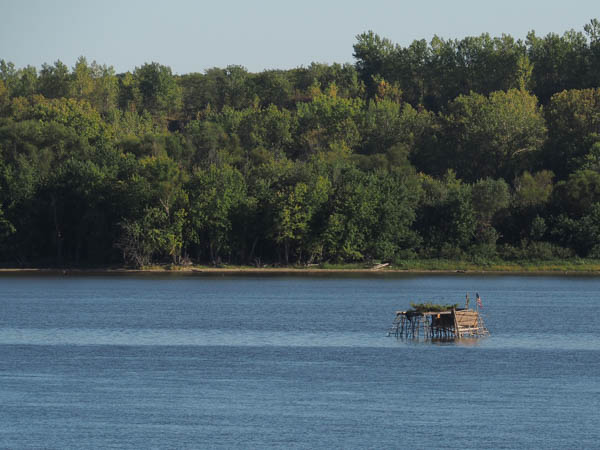
After our morning and early afternoon visit to Burlington, we departed for a cruise downriver. We never got bored with watching the scenery glide by.
We saw many of these along the upper Mississippi. They are duck blinds. Hunters will drive their boats into the blinds to ambush (they hope) unsuspecting ducks.
The blinds and their use are highly regulated. Users must obtain permits to build and use them. Only natural or biodegradable materials are allowed.
We saw many different styles and stages of maintenance. This one looked derelict.

The Mississippi flyway is used by many migrating waterfowl, but the primary ones that we saw were pelicans. Other common birds were Great Blue Herons, Egrets, various gulls, and others that I couldn't identify.
Another sight along this reach of river was Nauvoo, IL. The rebuilt Mormon Temple towered over the town. We passed it during supper when I didn't have my camera with me and we didn't know what it was until later. Jim and I speculated it had an ecclesiastical look, but neither of us had known it was rebuilt after being burned in 1848 after the Mormons were forced to leave the area.
Click your "back" button to return to the previous page or click for our picture album.